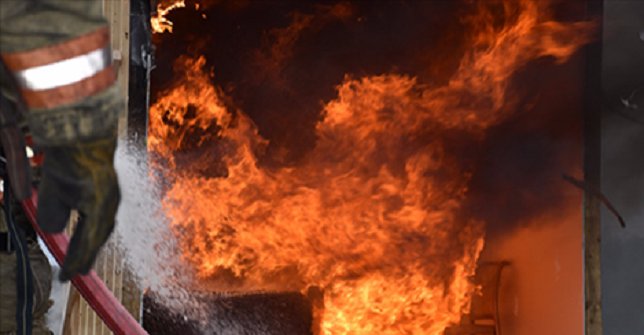Quincy, MA - May 12, 2016 - Should you sleep with your bedroom door opened or closed? It’s a straightforward question, but the answer isn’t quite so clear-cut. Many variables, including where people sleep in their homes and the location of their smoke alarms, make it challenging to craft a one-size-fits-all answer.
In an effort to reflect the latest information, the National Fire Protection Association’s (NFPA) Educational Messages Advisory Committee (EMAC) recently modified its messaging around sleeping with a door closed. Comprised of national, state, and local fire and life safety experts, EMAC meets periodically to review NFPA’s fire safety education messages and provide recommendations for revising them in accordance with NFPA’s codes, standards and related criteria, where applicable.
The updated message for sleeping with the door closed states, “A closed door may slow the spread of smoke, heat and fire. Install smoke alarms in every sleeping room and outside each separate sleeping area. For the best protection, make sure all smoke alarms are interconnected.” Previous messaging stated that if you sleep with the bedroom door closed, to install smoke alarms inside and outside the bedroom, and for the best protection, to make sure all smoke alarms are interconnected.
“NFPA and others have long acknowledged that closing a door can impact the spread of fire, but the primary message has been and continues to be to make sure you have working smoke alarms in your home, giving you early warning of a fire,” said Lorraine Carli, NFPA’s vice president of Outreach and Advocacy.
According to Carli, new research shows that fires burn faster today as a result of the way newer homes are built and the contents in homes. This led the committee to re-examine messaging around sleeping with doors closed.
“While there are so many variables to where a fire starts and how it spreads, anything that can potentially give you more time to get out should be considered,” said Carli, emphasizing that you may have as little as two minutes to escape a home fire, compared to seven to eight minutes years ago. “Today’s furnishings and open floor plans create scenarios that burn much more quickly than previous structures and their contents.”
The committee recommended additional research to look at other factors, such as whether or not a closed door could delay the early warning from a smoke alarm outside the sleeping room, and how a closed door will impact the rate of fatalities when the fire begins in the room where the door is closed.
“We are constantly reviewing our messages to make sure they reflect the latest knowledge in fire safety and we’ll continue to do so,” said Carli. “Given that the majority of fire deaths happen in homes with no smoke alarms or no working smoke alarms, we cannot stress enough the importance of making sure you have adequate protection from these life-saving devices.”
About the National Fire Protection Association (NFPA)
Founded in 1896, NFPA is a global, nonprofit organization devoted to eliminating death, injury, property and economic loss due to fire, electrical and related hazards. The association delivers information and knowledge through more than 300 consensus codes and standards, research, training, education, outreach and advocacy; and by partnering with others who share an interest in furthering the NFPA mission. For more information visit www.nfpa.org. All NFPA codes and standards can be viewed online for free.




